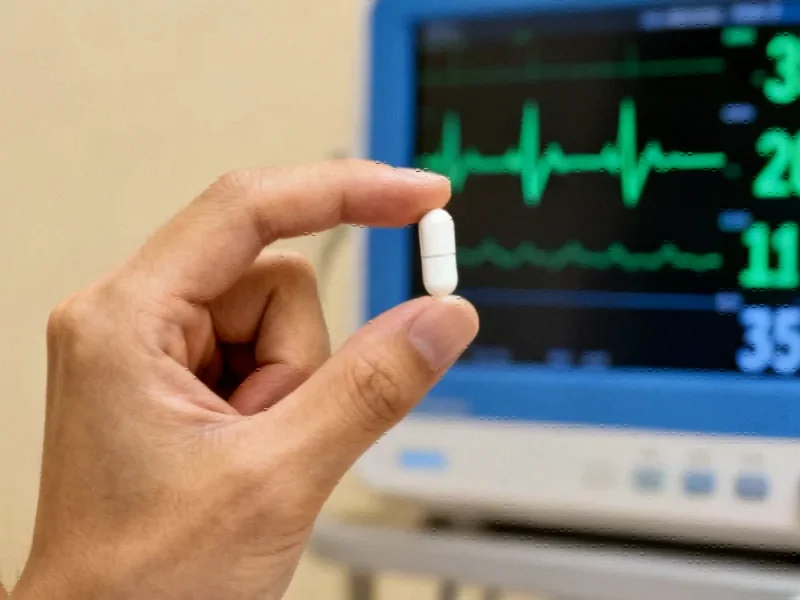Revolutionizing Newborn Screening Through Precision Measurement
The recent establishment of a comprehensive national laboratory facility in Guildford represents a significant advancement in healthcare diagnostics, particularly for the most vulnerable patients—newborns. The new complex, operated by life sciences group LGC, integrates three crucial entities: the National Measurement Laboratory (NML), the Government Chemist, and the Medicines and Healthcare products Regulatory Agency. This convergence of expertise aims to address one of healthcare’s most sensitive challenges: improving the reliability of newborn blood spot screening.
Currently administered to detect ten serious conditions including cystic fibrosis, the newborn blood spot test—commonly known as the heel prick test—represents a critical first line of defense in pediatric healthcare. However, like many diagnostic procedures, it’s susceptible to false positives that can cause unnecessary parental anxiety and require follow-up testing. According to Jim Huggett, director of biological metrology at the NML, their primary objective is “to reduce the likelihood of the false positive to provide more confidence in the testing.”
The Science Behind More Accurate Screening
The laboratory’s approach centers on biological metrology—the science of measurement in biological systems. By establishing more precise reference materials and standardized measurement protocols, researchers can ensure that heel prick test results are consistently accurate across different healthcare facilities. This work parallels other recent healthcare innovations that focus on improving diagnostic reliability through technological advancement.
Dr. Huggett’s team is developing sophisticated calibration methods that will help laboratories across the UK maintain consistent testing standards. “When we talk about measurement in healthcare, we’re fundamentally discussing how we can translate biological signals into reliable clinical decisions,” Huggett explained. “The challenge with newborn screening is that we’re working with minute blood samples while needing to maintain exceptional precision.”
Broader Implications for Medical Testing
The implications of this research extend far beyond newborn screening. The methodologies being developed could influence how various medical tests are standardized and validated. As we’ve seen with vision technology breakthroughs, precision in medical measurement often leads to unexpected applications across different specialties.
The laboratory’s work also intersects with broader technology developments in the healthcare sector, where artificial intelligence and advanced computing are increasingly being applied to diagnostic challenges. While the Guildford facility focuses specifically on metrology, its research contributes to the growing ecosystem of precision medicine initiatives.
Addressing Systemic Healthcare Challenges
This initiative comes at a time when healthcare systems worldwide are grappling with how to improve diagnostic accuracy while managing costs. The laboratory’s approach demonstrates how fundamental research in measurement science can have direct clinical applications. Similar to how infrastructure vulnerabilities can disrupt global systems, diagnostic inaccuracies can have cascading effects throughout healthcare networks.
The integration of multiple regulatory and scientific bodies under one roof enables a comprehensive approach to diagnostic improvement. Researchers can develop new measurement standards while simultaneously working with regulators to ensure these standards are practically implementable within the constraints of the National Health Service.
Future Directions and Industry Impact
Looking forward, the laboratory’s work may establish new paradigms for how medical tests are developed and validated. As with any sector facing transformation, the healthcare diagnostics industry must balance innovation with reliability. The Guildford facility represents a significant investment in ensuring that new screening technologies meet the highest standards of accuracy before reaching patients.
The research underway at the new national laboratory exemplifies how targeted scientific investment can address specific healthcare challenges while contributing to broader industry developments in medical testing. As these measurement standards evolve, they may eventually influence international guidelines for newborn screening and other critical diagnostic procedures.
The establishment of this facility signals a growing recognition that fundamental measurement science plays a crucial role in healthcare quality and patient outcomes, particularly for our youngest and most vulnerable population.
This article aggregates information from publicly available sources. All trademarks and copyrights belong to their respective owners.
Note: Featured image is for illustrative purposes only and does not represent any specific product, service, or entity mentioned in this article.



